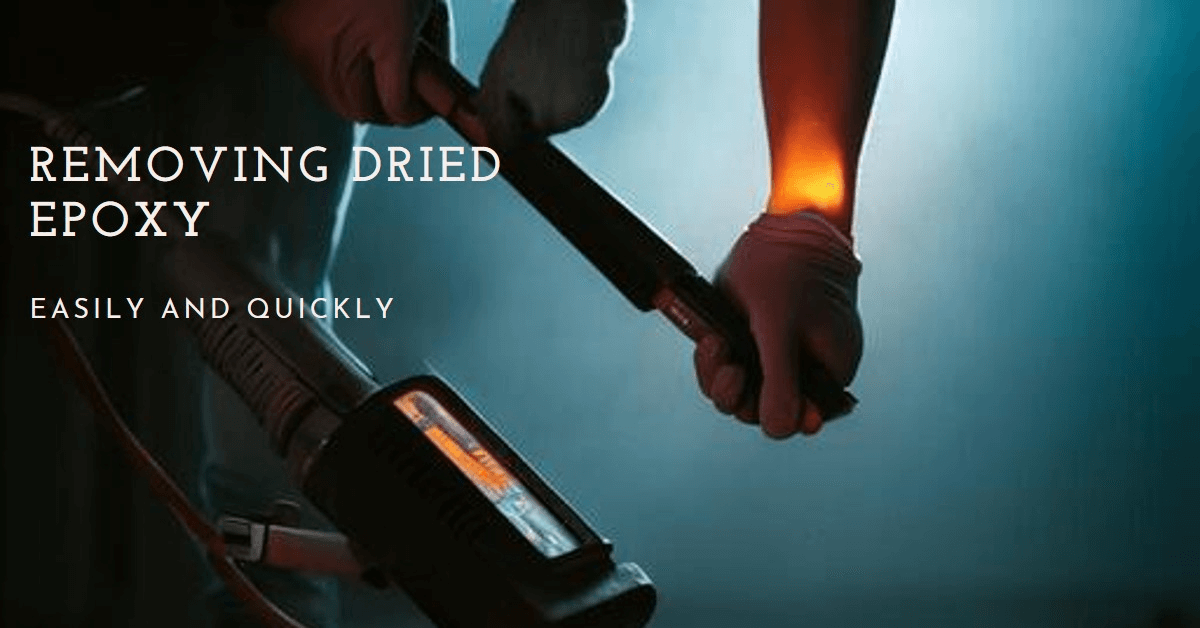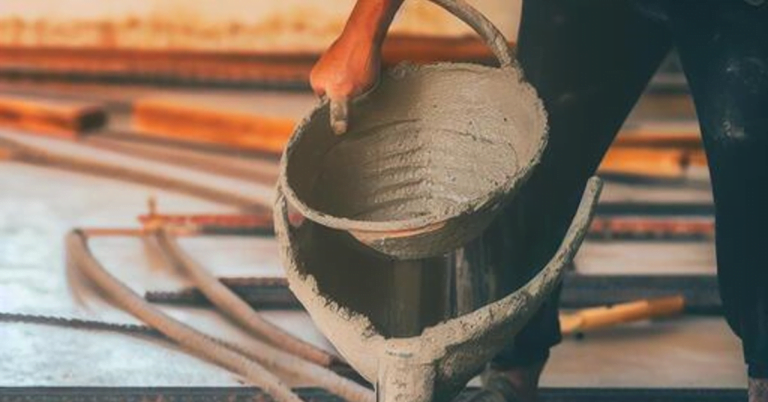The Ultimate Guide to Removing Epoxy from Concrete
Discover the best techniques to remove epoxy from concrete. From chemical strippers to heat guns, we guide you through the process, ensuring a clean, epoxy-free surface.

Have you ever applied epoxy to your concrete floors only to regret it later on? Maybe the color didn’t turn out the way you wanted it to or perhaps it’s just time for a change. Whatever the reason may be, removing epoxy from concrete can seem like a daunting task. But fear not, we’ve got you covered with some practical tips and techniques to get the job done.
Before we dive into the various methods of removing epoxy, it’s important to understand the different types of epoxy. There are two main types: solvent-based and water-based.
Solvent-based epoxies are generally more durable and have a stronger bond, but they are also more difficult to remove. Water-based epoxies, on the other hand, are easier to remove but may not be as durable.
Knowing which type of epoxy you have will help you determine the best method for removing it. So, let’s get started!
Understanding the Types of Epoxy
It’s important to understand the different types of epoxy so you can effectively address the issue at hand. Epoxy formulation differences can dictate how easily it can be removed from concrete surfaces.
There are two primary types of epoxy: solvent-based and water-based. Solvent-based epoxies are more difficult to remove because they contain a higher level of chemicals that make them more resistant to solvents. On the other hand, water-based epoxies are easier to remove because they contain fewer chemicals. Knowing the type of epoxy you’re dealing with can help you choose the best removal method.
Concrete surface preparation for epoxy application is also important to keep in mind. If the concrete surface was not properly prepared before the epoxy was applied, it can be more difficult to remove. The surface should be dry and free of any dirt or debris.
Additionally, if the epoxy was applied too thickly, it can be more difficult to remove as well. Ensuring proper surface preparation can make the removal process easier and more effective.
Using Chemical Strippers to Remove Epoxy
If you’re dealing with a stubborn substance on your concrete surface, there’s a solution that involves using chemical strippers to break down the bond. Before you begin, it’s important to note that there are eco-friendly alternatives to chemical strippers, so be sure to do your research and choose the best option for your needs. Additionally, it’s crucial to take safety precautions, such as wearing protective clothing and working in a well-ventilated area.
To effectively use chemical strippers, start by applying the product to the affected area. Be sure to read the instructions carefully, as different strippers may have different application methods.
Once the stripper has been applied, give it time to work its magic. This can range from a few minutes to several hours, depending on the product and the thickness of the epoxy.
Once the time has passed, use a scraper or pressure washer to remove the epoxy and stripper residue from the surface.
After removing the epoxy, it’s important to thoroughly clean the concrete surface to prevent any remaining residue from causing issues in the future. This can be done with a pressure washer or by scrubbing with a mixture of water and a concrete cleaner.
Chemical strippers can be a highly effective tool for removing epoxy from concrete surfaces, but it’s important to use them safely and responsibly.
Grinding and Sanding Techniques
Grinding and sanding techniques can be used to smooth and refine the surface of your concrete, giving it a polished and professional appearance. Diamond grinding is a highly effective method that uses diamond-infused discs to grind away the epoxy layer. This technique is often used by professionals and requires specialized equipment. However, if you’re up for a challenge, you can rent a diamond grinder from a hardware store and tackle the job yourself.
Hand sanding is another option for removing epoxy from concrete. This method is affordable and can be done without any special equipment. Start by using coarse-grit sandpaper to remove the top layer of epoxy. Then, switch to finer grit sandpaper to smooth out any rough spots. Remember to wear a dust mask and goggles while sanding to protect yourself from harmful dust particles.
While grinding and sanding can be effective methods for removing epoxy from concrete, they can also be time-consuming and messy. It’s important to take the necessary safety precautions and properly dispose of any debris.
Consider hiring a professional if you’re unsure about taking on the task yourself. With a little patience and persistence, you can achieve a smooth and epoxy-free concrete surface.
Heat Gun Method
Get ready to witness the impressive power of a heat gun as we explore a method that’ll have you feeling like a DIY pro. But before we dive into this method, it’s important to note some safety precautions.
Always wear protective gear such as gloves, goggles, and a mask to avoid inhaling fumes. Make sure the area is well-ventilated and keep a fire extinguisher nearby in case of any accidents.
The heat gun method involves applying high heat to the epoxy, causing it to soften and release from the concrete surface. Start by setting your heat gun to the highest temperature and directing it towards the epoxy.
Move the heat gun back and forth across the epoxy, being careful not to focus on one spot for too long as it can cause the concrete to crack. Once the epoxy starts to bubble and soften, use a scraper to remove it.
While the heat gun method can be effective, it may not work on all types of epoxy. It’s important to note that there are alternative methods such as using a chemical stripper or a concrete grinder.
If you’re unsure which method to use, consult with a professional or do some research to find the best option for your specific situation. With the right tools and techniques, removing epoxy from concrete can be a manageable DIY project.
Pressure Washing and Abrasive Blasting
Looking for a more efficient and effective way to tackle stubborn coatings on your surfaces? Pressure washing and abrasive blasting might just be the solution you need.
Pressure washing is an excellent way to remove epoxy from concrete. It is particularly helpful for large areas because it saves you time and effort. The high-pressure water stream from the washer can effectively remove the coating, leaving the surface clean and ready for new applications.
One of the benefits of pressure washing is its versatility. You can adjust the pressure and temperature to suit the specific requirements of the surface. For instance, if the surface is fragile, a low-pressure setting can be used to avoid damaging it. However, if the surface is heavily coated, a higher pressure may be required to remove the epoxy coating.
It is essential to choose the right pressure washing equipment for the job. Choosing the right abrasive material is also crucial when using abrasive blasting to remove epoxy from concrete. Abrasive blasting is a more aggressive method than pressure washing, but it can be highly effective when done correctly.
The abrasive material used can vary depending on the surface being treated. For instance, if the surface is delicate, a softer abrasive material such as crushed glass or walnut shells can be used. However, if the surface is tough, a harder abrasive such as aluminum oxide or steel shot might be necessary. It is best to consult with a professional to determine the right abrasive material to use for your specific situation.
By utilizing pressure washing and abrasive blasting, you can have a fast, efficient, and cost-effective way to remove epoxy from concrete. These methods are highly effective and can save you time and money.
Always remember to choose the right equipment and abrasive materials for your specific needs. With the right approach, you can achieve a clean and smooth surface that is ready for a new application.
Conclusion
So that’s how you remove epoxy from concrete! As you’ve seen, there are several methods available for removing epoxy, each with its own advantages and disadvantages.
Depending on your situation, you might choose to use a chemical stripper, grinding and sanding techniques, a heat gun, or pressure washing and abrasive blasting.
Regardless of which method you choose, be sure to take safety precautions and follow the manufacturer’s instructions carefully. With a little patience and elbow grease, you can remove epoxy from your concrete surfaces and restore them to their original state.
If you’re unsure which method is best for your needs, don’t hesitate to consult with a professional. A knowledgeable contractor or equipment rental company can help you select the right tools and techniques for your particular situation.
And remember, prevention is always the best cure – if you’re planning to apply epoxy to your concrete surfaces, be sure to properly prepare the surface beforehand and follow the manufacturer’s instructions carefully to ensure a smooth, long-lasting finish.
